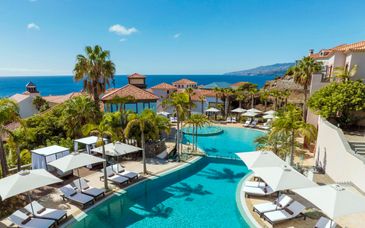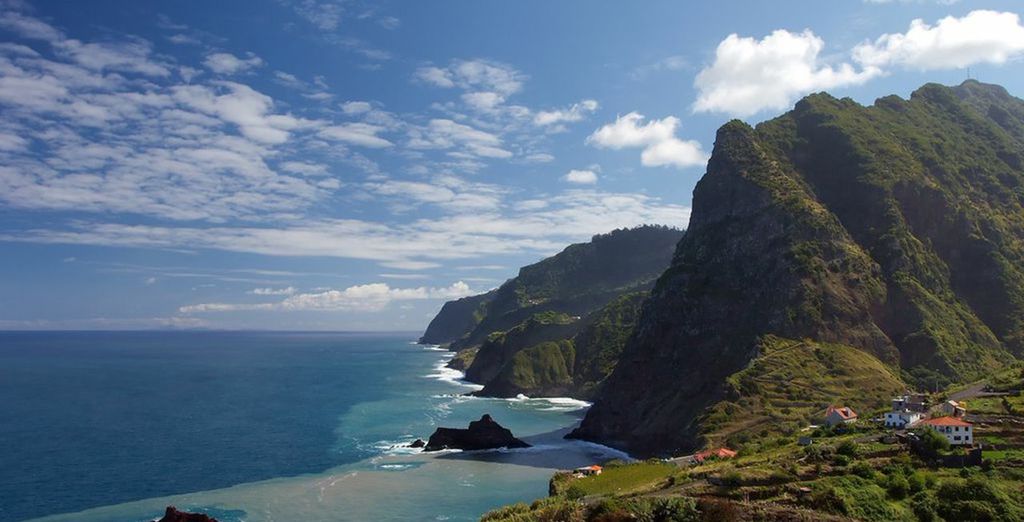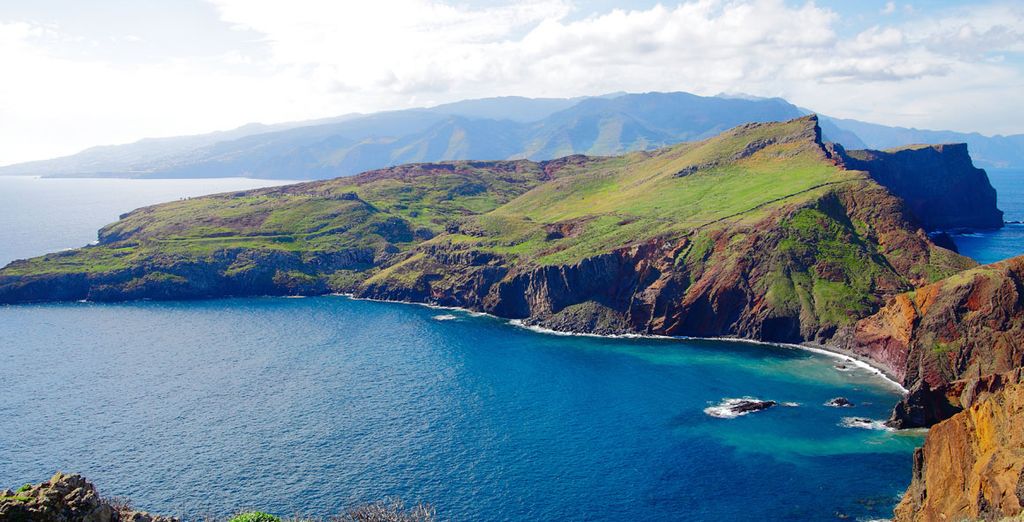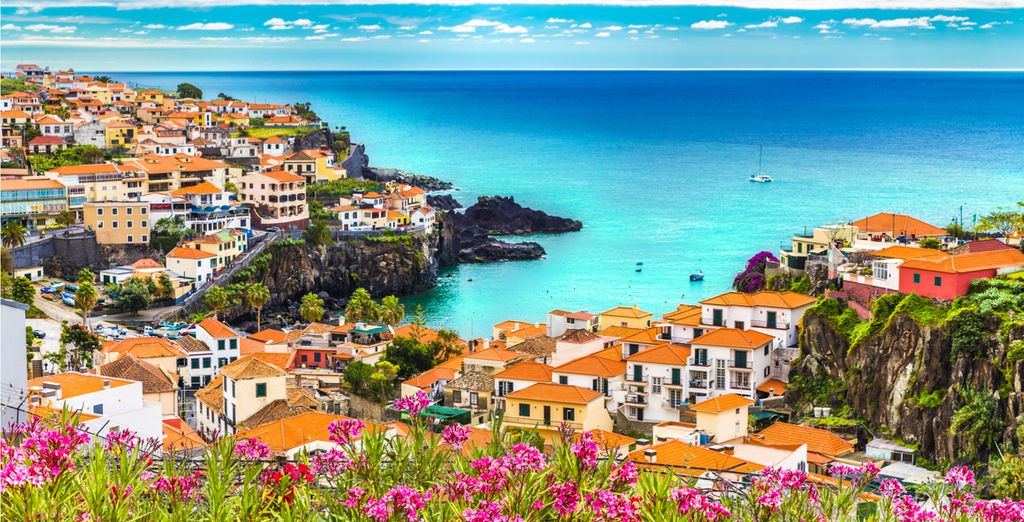

The Best Time to Visit Madeira
Table of contents
When is the best time to visit Madeira?
The Portuguese archipelago of Madeira is one of Europe’s premier holiday destinations. This collection of islands lies well to the south of mainland Portugal, off the Moroccan coast. Madeira benefits from a unique microclimate that offers the best conditions for exploring these fertile islands at any time of year. Temperatures seldom drop lower than 15°C in coastal regions, while the heat in summer can soar to over 30°C. This means the weather in Madeira is wonderfully pleasant all year round. Explore vibrant towns and laid-back resorts, or climb into the rugged hinterland to discover the natural secrets of this permanently green and lush island.
Spring in Madeira

Spring is one of the most spectacular times to visit Madeira. Temperatures average at 20°C during March and April, with a few days of rain each month as the winter weather fronts dissipate. The pleasant temperatures and frequent sunshine make early spring a great time for exploring the streets of the capital, Funchal. Alternatively, make your way up the steep hillsides from the harbour to the Funchal Botanical Gardens, and admire the beautifully manicured displays and beds that have earned Madeira its reputation as the island of flowers.
Madeira is called ‘The Island of Eternal Spring’ by some, meaning that springtime is the most special of seasons to visit the island. Madeira's festival calendar explodes into life between February and March, with the party atmosphere beginning with the arrival of Carnival. This lively celebration takes place just before the onset of Lent each year. During Carnival, the streets are filled with colourful parades and vibrant decorations, marking the beginning of the island’s busy festival calendar. Another of the spring highlights is the annual Flower Festival in Funchal every May. This is a grand feast of colour and fragrance, during which the streets and hillsides come alive with gorgeous floral blooms. Join the locals to celebrate the flowers of Madeira at markets, public displays, and exhibitions throughout this festival.
Summer in Madeira

The summer season in Madeira is perfect for sun-seekers, with temperatures rising to the mid-20s along the coast – and occasionally reaching as high as the low-30s. The few remaining spring showers tend to trail off through June, ensuring the skies remain clear for the duration of the summer months. This is one of the best times of year to take part in all sorts of activities across the islands. If you are an adventure seeker, you will enjoy hiking in the mountains that tower over the interior and offer some excellent trails. One of the most famous trails is the Verada de Areeiro – it straddles two of Madeira’s tallest peaks that offer spectacular views across the island. With clear skies and temperatures remaining manageable, summer is a great time to try this hike.
For something more relaxing, head to one of Madeira’s beaches to enjoy unwinding in the sun. The islands of Madeira are volcanic, meaning that you will not find the natural, golden sands of mainland Portugal here, especially on the main island. However, there are plenty of peaceful coves and pebble beaches to enjoy. There are also artificially created sandy beaches in some of the more popular tourist spots. Camara de Lobos, a popular haunt of artists and celebrities, is home to an excellent pebble beach next to the small and beautiful village. And Camara de Lobos also boasts great weather. It is sheltered by the towering sea cliffs that surround the area, allowing for relaxation in the sun without too much of a breeze. For a more traditional sandy beach experience, you can hop on the ferry to Porto Santo, which is approximately a two-hour sail from Funchal. Porto Santo beach is unique – it is the only natural sand beach in the archipelago and is nine km long. Although there are plenty of artificial sand beaches closer to the resort towns of the main island.
Autumn in Madeira
The busy tourist seasons of spring and summer months begin to wind down as autumn begins. Although September is still a popular choice, with temperatures remaining high, the risk of rain grows as the month progresses. October and November are very quiet by contrast and the perfect time to visit if you want to avoid the crowds. Temperatures in the late autumn settle in the low 20s, and the weather remains balmy enough to explore quite comfortably without the risk of heavy rain. Discover the highlights of Funchal and other neighbouring towns by visiting some of the excellent museums and galleries. Foodies may wish to absorb the serene atmosphere of an al-fresco dining experience in one of Funchal’s many restaurants and tavernas. If you are feeling particularly adventurous, try the local speciality of scabbard fish served with fried bananas – a true Madeiran delicacy.
While quieter, the autumn is a great time to visit Madeira to experience more of its festival calendar. Throughout September, the island celebrates the world-famous Madeira Wine, which is one of its chief products. The Madeira Wine Festival is a lively event centred on the production of this sweet dessert wine. Beginning in Funchal, the local population celebrates the traditional practices for the production of wines with folk dance, dress, and entertainment becoming prominent throughout Madeira. October then brings the Madeira Nature Festival, during which you can try your hand at a range of outdoor activities. These include canyoning, mountain biking, horseback riding, dolphin and whale watching – and of course, hiking.
Winter in Madeira
Madeiran winters could easily be mistaken for summer in Northern Europe, with pleasant temperatures ranging between 15–25°C. Although winter is one of Madeira’s quieter periods, there is still plenty to do if you are looking to find some sun. Head to Ponta de São Lourenço, located in Madeira's extreme east, to explore this nature reserve with immense volcanic rocks. Alternatively, on Madeira’s south coast, walk on Monte Cabo Girão, the highest cliff in Europe. Do not miss the chance to cross the transparent glass skywalk over a 580-meter drop. It is no wonder the location is a busy lookout point that gets up to 1800 visitors a day and is also a popular starting point for hikers. Or why not take a toboggan ride from the town of Monte in a “Carro de Cesto” to experience the most exciting means of downhill transportation in Funchal? You can also enjoy panoramic views of the harbour along the way.
December is an excellent month of year to visit, as you can experience Christmas with a twist. The streets of Funchal fill with a festive atmosphere, as Christmas markets appear in many of the squares around the city. Sample traditional Christmas treats and discover locally made gifts and souvenirs as you explore the stalls – all while the sun shines overhead.
What to bring to Madeira

- Comfortable footwear
- A jacket for cooler days
- Sun protection, including a hat and sunscreen
- Your camera
